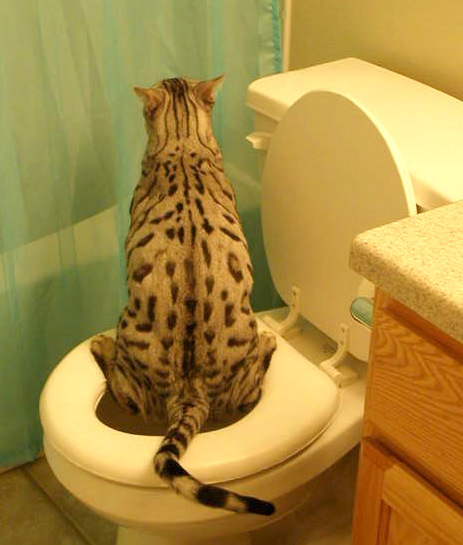The Consequences of Flushing Cat Poop Down Your Toilet - Protect Your Plumbing
The Consequences of Flushing Cat Poop Down Your Toilet - Protect Your Plumbing
Blog Article
Do you find yourself in search of suggestions about How to Dispose of Cat Poop and Litter Without Plastic Bags?

Introduction
As pet cat proprietors, it's essential to be mindful of how we take care of our feline friends' waste. While it may seem practical to purge pet cat poop down the toilet, this practice can have detrimental repercussions for both the atmosphere and human health.
Ecological Impact
Flushing feline poop introduces harmful virus and bloodsuckers right into the water system, presenting a considerable danger to aquatic ecological communities. These pollutants can negatively affect aquatic life and concession water top quality.
Wellness Risks
Along with ecological worries, purging feline waste can likewise position health threats to people. Feline feces may consist of Toxoplasma gondii, a parasite that can cause toxoplasmosis-- a potentially extreme health problem, specifically for expecting ladies and individuals with weakened body immune systems.
Alternatives to Flushing
The good news is, there are much safer and much more responsible ways to dispose of cat poop. Take into consideration the adhering to options:
1. Scoop and Dispose in Trash
The most common method of disposing of pet cat poop is to scoop it right into a biodegradable bag and throw it in the garbage. Make sure to use a dedicated clutter scoop and dispose of the waste without delay.
2. Usage Biodegradable Litter
Choose eco-friendly cat clutter made from products such as corn or wheat. These litters are eco-friendly and can be safely dealt with in the garbage.
3. Hide in the Yard
If you have a yard, take into consideration burying pet cat waste in an assigned location away from veggie gardens and water resources. Be sure to dig deep adequate to prevent contamination of groundwater.
4. Set Up a Pet Waste Disposal System
Invest in a family pet waste disposal system especially designed for feline waste. These systems use enzymes to break down the waste, minimizing odor and environmental influence.
Final thought
Liable animal possession expands beyond supplying food and sanctuary-- it additionally involves appropriate waste monitoring. By refraining from flushing pet cat poop down the toilet and selecting different disposal methods, we can reduce our ecological footprint and safeguard human wellness.
Why Can’t I Flush Cat Poop?
It Spreads a Parasite
Cats are frequently infected with a parasite called toxoplasma gondii. The parasite causes an infection called toxoplasmosis. It is usually harmless to cats. The parasite only uses cat poop as a host for its eggs. Otherwise, the cat’s immune system usually keeps the infection at low enough levels to maintain its own health. But it does not stop the develop of eggs. These eggs are tiny and surprisingly tough. They may survive for a year before they begin to grow. But that’s the problem.
Our wastewater system is not designed to deal with toxoplasmosis eggs. Instead, most eggs will flush from your toilet into sewers and wastewater management plants. After the sewage is treated for many other harmful things in it, it is typically released into local rivers, lakes, or oceans. Here, the toxoplasmosis eggs can find new hosts, including starfish, crabs, otters, and many other wildlife. For many, this is a significant risk to their health. Toxoplasmosis can also end up infecting water sources that are important for agriculture, which means our deer, pigs, and sheep can get infected too.
Is There Risk to Humans?
There can be a risk to human life from flushing cat poop down the toilet. If you do so, the parasites from your cat’s poop can end up in shellfish, game animals, or livestock. If this meat is then served raw or undercooked, the people who eat it can get sick.
In fact, according to the CDC, 40 million people in the United States are infected with toxoplasma gondii. They get it from exposure to infected seafood, or from some kind of cat poop contamination, like drinking from a stream that is contaminated or touching anything that has come into contact with cat poop. That includes just cleaning a cat litter box.
Most people who get infected with these parasites will not develop any symptoms. However, for pregnant women or for those with compromised immune systems, the parasite can cause severe health problems.
How to Handle Cat Poop
The best way to handle cat poop is actually to clean the box more often. The eggs that the parasite sheds will not become active until one to five days after the cat poops. That means that if you clean daily, you’re much less likely to come into direct contact with infectious eggs.
That said, always dispose of cat poop in the garbage and not down the toilet. Wash your hands before and after you clean the litter box, and bring the bag of poop right outside to your garbage bins.
https://trenchlesssolutionsusa.com/why-cant-i-flush-cat-poop/

We were made aware of that write-up about Can You Flush Cat Poo or Litter Down the Toilet? from a friend on a different web blog. If you liked our article plz do not forget to share it. Thanks a bunch for your time. Visit again soon.
Book An Appointment Report this page